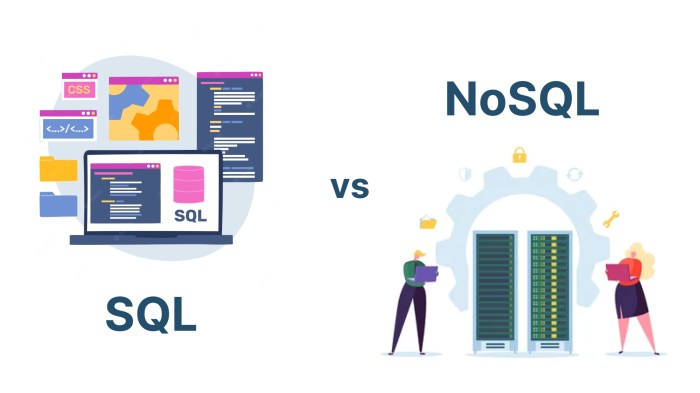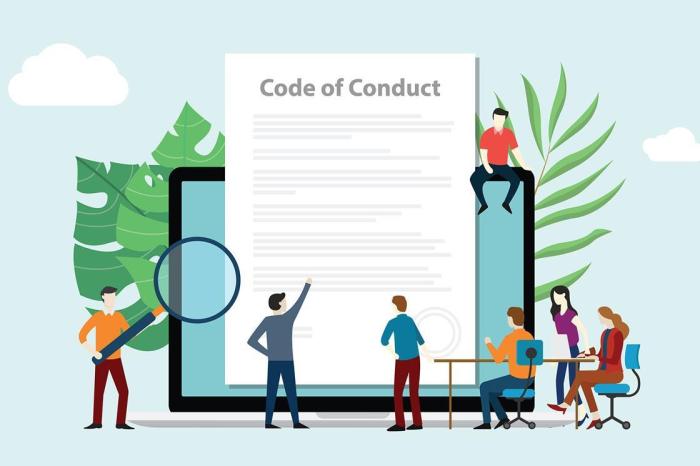The “golden hammer” anti-pattern in technology arises when developers rely excessively on a single tool or technique, neglecting alternative approaches. This rigid mindset can stifle innovation, limit flexibility, and ultimately hinder project success. This comprehensive guide delves into the origins, symptoms, and solutions for effectively avoiding this detrimental practice.
This guide provides a roadmap to identify and overcome the “golden hammer” syndrome, offering strategies for fostering adaptability and innovation in technology selection and implementation. We’ll explore real-world examples and best practices to equip you with the knowledge and tools necessary for long-term success in diverse technological environments.
Defining the Golden Hammer Anti-pattern
The “golden hammer” anti-pattern arises when developers or teams become overly reliant on a single technology, tool, or approach to solve all problems. This narrow focus often leads to suboptimal solutions and hinders adaptability in the face of evolving project needs. Instead of thoughtfully considering the best approach for each situation, the “golden hammer” mentality results in a rigid and potentially inefficient application of a single, favoured solution.The core principle behind the “golden hammer” anti-pattern is the tendency to prioritize familiarity and comfort over evaluating alternative solutions.
This ingrained preference for a particular tool, language, or methodology often blinds developers to more appropriate and efficient alternatives. This narrow mindset can significantly impact project timelines, costs, and ultimately, the quality of the end product.
Pitfalls of the Golden Hammer
Relying on a single solution can lead to several pitfalls. Developers may miss opportunities to leverage more suitable tools or technologies for specific tasks. This results in unnecessary complexity and a lack of flexibility. Further, a “one-size-fits-all” approach can hinder the team’s ability to adapt to evolving project requirements or changing technical landscapes. The long-term consequences of this inflexible methodology can include increased development costs, extended timelines, and ultimately, a less robust and maintainable final product.
Examples of the Golden Hammer in Software Development
The “golden hammer” anti-pattern manifests in various ways during software development. For instance, a team might exclusively use a specific programming language, even when another language is better suited for a particular module or feature. Alternatively, they might insist on a particular framework for all projects, despite the presence of more appropriate choices for specific functionalities. A common example involves choosing a database management system (DBMS) based on familiarity, even if a different system would offer better performance or scalability for the particular use case.
In all these cases, the “golden hammer” approach leads to suboptimal solutions.
Contrasting Approaches: Golden Hammer vs. Flexible Approach
| Characteristic | Golden Hammer Approach | Flexible Approach |
|---|---|---|
| Technology Choice | Primarily relies on a single, preferred technology (e.g., specific programming language, framework, or database). | Evaluates multiple technologies and selects the most appropriate one for each task, considering factors such as performance, scalability, maintainability, and team expertise. |
| Problem Solving | Applies the chosen technology to all problems, regardless of suitability. | Adapts the chosen technology based on the specific problem and context. |
| Team Expertise | May limit the team’s overall skillset to a narrow specialization. | Encourages the team to develop a broader skillset, enabling them to address diverse problems effectively. |
| Scalability | May lead to scalability limitations or inefficiencies. | Promotes scalability by leveraging the best tools for each specific aspect of the project. |
| Maintainability | Can result in less maintainable code due to a lack of flexibility and potentially suboptimal design choices. | Leads to better maintainability due to the tailored use of suitable technologies and methodologies. |
Recognizing the Symptoms of the Golden Hammer
The “golden hammer” anti-pattern emerges when a team or project becomes overly reliant on a specific tool, technique, or methodology, treating it as a universal solution for all problems. This rigid adherence can stifle innovation, limit flexibility, and ultimately lead to suboptimal results. Understanding the symptoms is crucial for recognizing and mitigating this anti-pattern.Identifying these symptoms is vital for early intervention and ensuring projects remain adaptable and efficient.
Over-reliance on a specific tool can hinder creativity and prevent teams from exploring alternative solutions, potentially leading to poor outcomes. A flexible approach, where teams are equipped to evaluate various solutions and adapt to changing conditions, is essential for long-term project success.
Common Symptoms of Over-Reliance
A project exhibiting the golden hammer anti-pattern often demonstrates several key symptoms. These include a consistent preference for a particular tool or technique, even when other approaches might be more appropriate. A strong resistance to change, where any deviation from the chosen method is met with significant opposition, is another telltale sign. The inflexibility in methodology often manifests as a reluctance to experiment with new technologies or approaches.
Telltale Signs of Inflexibility
Teams trapped in the golden hammer pattern frequently exhibit inflexibility in their approach. This is evident in their resistance to adopting new tools or techniques, even when these tools offer significant advantages. Project documentation and code often reveal a consistent and rigid structure that is resistant to modification. These patterns become increasingly apparent as the project progresses and the need for adaptation grows.
For instance, the project may persistently utilize a specific framework for development, regardless of its suitability for the current task or whether other frameworks might offer better performance or maintainability.
Examples of the Golden Hammer in Action
Consider a project that consistently employs a specific, highly specialized programming language, even when other languages might better address certain functionalities. This project may also insist on a particular, inflexible database schema despite the potential for improved performance with a more flexible design. The documentation may be rigid and overly prescriptive, offering little room for adaptation. Codebases may be characterized by repetitive code structures, reflecting a lack of exploration into more efficient alternatives.
In these cases, the “golden hammer” mentality is clearly at play.
Adaptability vs. Golden Hammer
The following table contrasts projects that successfully adapt to changes with those stuck in the “golden hammer” pattern.
| Characteristic | Adaptable Project | Golden Hammer Project |
|---|---|---|
| Methodology | Open to exploring alternative approaches and adjusting methodologies based on evolving needs. | Rigidly adheres to a single, preferred methodology, resisting changes and new tools. |
| Documentation | Flexible and updated to reflect changes and new understanding. | Static and inflexible, reflecting the initial, fixed approach. |
| Codebase | Well-structured, modular, and adaptable to new features and functionalities. | Repetitive and inflexible, with a heavy reliance on specific, pre-defined code structures. |
| Team Response to Change | Open to suggestions, proactively seeking new solutions, and embracing change. | Resistant to change, viewing suggestions for alternative approaches as a threat or a deviation from the “right” way. |
Understanding the Root Causes

The “golden hammer” anti-pattern, where a single, seemingly perfect solution is applied indiscriminately to all problems, stems from a complex interplay of psychological and organizational factors. Understanding these underlying drivers is crucial to recognizing and mitigating this problematic approach. A deeper dive into these factors allows for the development of preventative strategies and fosters a more nuanced and effective problem-solving approach.The allure of a “silver bullet” solution is powerful, often rooted in a desire for efficiency and a fear of the unknown.
This desire, combined with organizational pressures, can lead to a focus on readily available solutions, even if they are not the most appropriate or sustainable. Recognizing these psychological and organizational triggers is essential for avoiding the trap of the “golden hammer”.
Psychological Factors
The fear of failure often fuels the “golden hammer” approach. When individuals or teams are uncertain about the best course of action, they may default to a familiar, tried-and-tested method, even if it’s not the optimal one. This reliance on a known solution stems from the human tendency to avoid the discomfort and risk associated with exploring alternative approaches.
This tendency, when coupled with organizational pressures, can amplify the temptation to employ a seemingly simple solution.
Organizational Factors
Perceived efficiency gains often play a crucial role in the adoption of the “golden hammer” approach. A solution that quickly provides a measurable improvement can be highly attractive, particularly in environments where rapid results are prioritized. This focus on short-term gains often overshadows the potential long-term consequences of a less-than-ideal solution. Additionally, a culture that rewards quick fixes can further encourage this behavior.
Impact of Limited Resources and Time Constraints
Limited resources and time constraints often create pressure to adopt readily available solutions, even if they are not the most effective or comprehensive. The urgency to address problems quickly can make it difficult to explore alternative approaches and potentially lead to a “golden hammer” solution. A lack of time and resources can create a sense of desperation that prioritizes speed over careful consideration.
The Role of Limited Knowledge
Limited knowledge about the problem domain or the available solutions can lead to a biased or overly simplistic view. A lack of understanding about the complexities of the issue can make it difficult to identify the true root causes, which can in turn lead to the application of a “golden hammer” solution that addresses symptoms but not the underlying problem.
Individuals may lack the necessary understanding to assess different solutions and choose the one that best fits the situation.
Impact of Lack of Diverse Perspectives
A lack of diverse perspectives within a team or organization can significantly contribute to the “golden hammer” anti-pattern. If a narrow range of viewpoints is considered, a more comprehensive and nuanced understanding of the problem is unlikely to emerge. This can lead to a reliance on solutions that have been previously employed but might not be suitable for the current context.
A lack of diverse perspectives leads to a restricted view of possible solutions.
Analyzing Project History for Golden Hammer Signs
Analyzing a project’s history for signs of a “golden hammer” approach requires a systematic examination of past decisions and actions. This involves scrutinizing the selection process for solutions, evaluating the rationale behind chosen approaches, and assessing whether the chosen solutions have been consistently applied across similar problems. The focus should be on identifying recurring patterns that suggest a tendency to rely on a single, favored solution regardless of its appropriateness.
A retrospective review of the project’s history can identify recurring themes and patterns, offering insights into potential underlying issues and biases.
Alternatives and Solutions
The “golden hammer” anti-pattern arises from a tendency to over-rely on a single, seemingly effective solution. Recognizing this pitfall is crucial for building adaptable and resilient technological strategies. This section explores alternative strategies, methods for fostering adaptability, and approaches to promoting diverse perspectives. These elements are essential to avoiding the rigidity inherent in the golden hammer mentality.By adopting a multifaceted approach, organizations can effectively mitigate the risks associated with the “golden hammer” syndrome.
This involves actively considering diverse solutions, encouraging adaptability within teams, and fostering a culture of open dialogue about technology choices. This approach empowers organizations to respond more effectively to evolving business needs and technological advancements.
Alternative Strategies
Several alternative strategies can be employed to avoid the “golden hammer” anti-pattern. These include adopting a portfolio approach to technology, encouraging experimentation with various tools, and fostering a culture of continuous learning and improvement. This approach moves beyond the “one-size-fits-all” mentality and embraces a more nuanced understanding of technology’s role.
- Portfolio Approach: Instead of relying on a single technology for all needs, organizations can maintain a portfolio of different technologies, each tailored to specific tasks or use cases. This allows for flexibility and adaptability as needs evolve.
- Experimentation and Prototyping: Encouraging experimentation with different technologies through prototyping can provide valuable insights into their strengths and weaknesses. This iterative process allows teams to identify the best fit for their specific requirements.
- Continuous Learning and Improvement: Establish a culture that prioritizes continuous learning and improvement. This can involve regular training sessions, knowledge sharing initiatives, and encouraging staff to explore new technologies.
Encouraging Adaptability
Promoting adaptability and flexibility in technology choices is paramount to avoiding the “golden hammer” anti-pattern. This involves creating a culture where employees feel empowered to explore new technologies and solutions.
- Flexible Technology Budgets: Implementing flexible technology budgets can enable organizations to respond quickly to evolving needs without significant delays. This allows for exploration of innovative solutions and prevents rigidity.
- Empowerment and Autonomy: Empowering employees to make informed decisions regarding technology choices fosters a sense of ownership and responsibility, encouraging adaptability and innovation.
- Open Communication Channels: Establishing open communication channels enables a constant flow of information and feedback, facilitating more informed technology choices and reducing the risk of a “golden hammer” approach.
Promoting Diverse Perspectives
Diverse perspectives are essential for avoiding the “golden hammer” anti-pattern. A variety of viewpoints and experiences can lead to more comprehensive and well-rounded solutions.
- Cross-Functional Teams: Including representatives from various departments in technology selection processes ensures a more holistic perspective and avoids overlooking crucial aspects.
- External Collaboration: Collaborating with external experts and partners can provide fresh perspectives and innovative solutions, thereby broadening the range of options.
- Open Discussions and Debates: Facilitating open discussions and debates about technology choices allows for a critical evaluation of various options and promotes a more adaptable approach.
Tools and Techniques
A variety of tools and techniques can encourage adaptability in the face of changing needs.
- Agile Methodologies: Adopting agile methodologies, such as Scrum or Kanban, allows for iterative development and adaptation to changing requirements.
- Design Thinking Principles: Employing design thinking principles encourages empathy, experimentation, and iterative development, fostering a more flexible and adaptable approach.
- Technology Roadmaps: Creating technology roadmaps that are regularly reviewed and updated enables proactive adaptation to evolving needs.
Solution Analysis Procedure
A structured procedure for analyzing and evaluating potential solutions to avoid the “golden hammer” anti-pattern can be implemented.
- Define the Problem Clearly: Clearly define the problem or need that the technology solution aims to address.
- Identify Potential Solutions: Identify a broad range of potential solutions, not just the most obvious one.
- Evaluate Solutions: Evaluate potential solutions based on their cost-effectiveness, feasibility, and alignment with business objectives. Consider factors such as scalability, maintainability, and security.
- Prioritize Solutions: Prioritize solutions based on their potential impact and alignment with the defined problem.
- Implement and Monitor: Implement the chosen solution and continuously monitor its performance and effectiveness, adjusting as needed.
Practical Application in Different Contexts

The “golden hammer” anti-pattern, characterized by relying on a single, overly-simplified solution for all problems, is pervasive across various technology domains. Understanding its manifestation in different contexts allows for proactive identification and mitigation. This section explores how the anti-pattern impacts different technology domains and project phases, highlighting its effects on timelines, budgets, and team morale.The application of a “golden hammer” approach often stems from a desire for efficiency or familiarity.
However, it frequently leads to suboptimal solutions and long-term difficulties. Recognizing the context-specific implications is crucial for developing robust and effective strategies.
Web Development
The “golden hammer” in web development often manifests as an over-reliance on a specific framework, library, or technology stack. Developers might choose a framework for its initial ease of use, regardless of project needs, rather than assessing the best fit. This approach can hinder innovation and lead to inflexible solutions that struggle to adapt to changing requirements.
- In the design phase, a team might impose a framework that doesn’t align with the project’s unique user experience needs, potentially resulting in a less intuitive or engaging user interface.
- During implementation, sticking with a single, unfamiliar framework may introduce unnecessary complexities and time delays, especially when facing unique challenges.
- Maintenance becomes problematic as the codebase becomes entangled with the chosen framework, potentially leading to costly and time-consuming refactoring.
Mobile App Development
In mobile app development, the “golden hammer” could be a specific platform’s native development kit or a particular UI framework. Teams might select a platform simply due to familiarity, rather than evaluating if it aligns with the target user base or project goals.
- The design phase could suffer from a lack of exploration of alternative approaches for cross-platform compatibility.
- Development might become overly reliant on a specific library or toolset, making it difficult to adapt to changing performance needs or feature requirements.
- Maintaining a monolithically-designed application can become significantly challenging as the application grows and evolves.
Data Science
Data science projects can fall prey to the “golden hammer” anti-pattern by exclusively relying on one particular algorithm or machine learning model. Teams may favor a familiar model without thoroughly exploring alternative approaches or assessing its suitability for the specific data and problem.
- The design phase might miss opportunities to explore different models and their suitability for data characteristics.
- Implementation can become inefficient if the chosen algorithm isn’t optimized for the dataset’s structure.
- Maintenance could prove challenging if the model requires significant modifications or retraining, which might not be well-suited to the existing framework.
Impact on Project Metrics
The “golden hammer” approach often leads to project overruns and budget violations.
| Context | Impact on Project Timeline | Impact on Project Budget |
|---|---|---|
| Web Development | Increased development time due to framework limitations; delays in adapting to changing requirements. | Increased costs due to unforeseen complications, rework, and potential need for external expertise. |
| Mobile App Development | Extended development cycles due to platform-specific constraints and lack of flexibility. | Increased costs due to potential platform limitations, platform-specific testing, and the need for rework. |
| Data Science | Delays in model selection and evaluation, potentially delaying insights and actionable results. | Increased costs due to suboptimal model performance, potential need for retraining, and resource allocation for model refinement. |
Impact on Team Morale and Productivity
A “golden hammer” approach often stifles creativity and innovation within a team.
- Team members may feel restricted in their ability to contribute alternative solutions or explore different approaches.
- Reduced team morale due to frustration with the inflexible methodology.
- Potential for decreased productivity due to wasted time on inappropriate techniques or tools.
Best Practices for Avoiding the Anti-pattern
The “golden hammer” anti-pattern arises from a tendency to rely excessively on a single, seemingly effective solution for every problem. This rigid approach hinders adaptability and often leads to suboptimal outcomes. To avoid this trap, organizations must cultivate a culture of continuous learning, critical evaluation, and flexible problem-solving.
Fostering Adaptability and Avoiding the Golden Hammer
Successfully navigating technological landscapes requires embracing a mindset that prioritizes adaptability over reliance on a single “silver bullet.” This necessitates a proactive approach to continuous learning and skill diversification within teams, allowing them to effectively assess and adapt to new challenges.
Promoting Continuous Learning and Skill Diversification
Continuous learning and skill diversification are crucial for mitigating the risk of falling into the “golden hammer” trap. Teams must be encouraged to explore diverse technologies and approaches, developing a broad skillset that goes beyond any single tool. Regular training, workshops, and mentorship programs can significantly contribute to this objective. Cross-functional collaboration and knowledge sharing can also facilitate this process.
Encouraging team members to experiment with new tools and techniques in a safe environment can foster innovation and flexibility. This learning process is not limited to formal training but should also include opportunities for self-directed learning and exploration.
Evaluating and Selecting Tools Based on Specific Needs and Context
Blindly adopting a single “golden hammer” tool can lead to significant inefficiencies. A critical evaluation process, grounded in specific needs and context, is essential. Teams should meticulously analyze the problem, considering factors like project scope, available resources, existing infrastructure, and team expertise. Instead of assuming a single tool fits all, a structured evaluation process can help select tools tailored to the specific context.
This includes considering factors such as ease of use, scalability, integration with existing systems, and the potential for future maintenance and support.
Prioritizing Flexibility and Adaptability in Project Planning
Project planning should actively incorporate flexibility and adaptability. Instead of rigid schedules and predefined solutions, projects should be designed with room for change and adjustments. This involves building in buffer time for unexpected challenges and incorporating iterative development methodologies. The focus should shift from meticulously defining every detail upfront to a more fluid approach that allows for course correction as needed.
This adaptability translates to the ability to pivot effectively when faced with new information or changing circumstances. Building in checkpoints and feedback loops allows for adjustments along the way.
A Step-by-Step Guide for Building a Project with Flexibility and Avoiding the “Golden Hammer”
- Clearly Define the Problem: Thoroughly understand the project’s objectives, scope, and constraints. This includes identifying potential challenges and alternative solutions.
- Research and Evaluate Tools: Explore various tools and approaches that might address the problem. Focus on evaluating them based on specific needs and context, not on perceived popularity or reputation alone.
- Prototype and Test: Develop prototypes or pilot projects to test different solutions and gather feedback. This iterative approach allows for adjustments based on real-world experience and ensures the chosen solution aligns with user needs.
- Incorporate Feedback Loops: Establish mechanisms for gathering feedback throughout the project lifecycle. This includes regularly assessing progress and making necessary adjustments based on user feedback and emerging challenges.
- Document and Share Knowledge: Document the rationale behind the chosen approach and the lessons learned during the project. This shared knowledge can be leveraged in future projects, fostering a culture of learning and adaptability.
Case Studies and Examples
Successfully navigating technological evolution requires adaptability and a proactive approach to avoid the “golden hammer” anti-pattern. Real-world case studies highlight the importance of recognizing evolving needs and choosing solutions that offer flexibility and scalability. These examples illuminate strategies for maintaining a forward-looking perspective, ensuring that technological investments align with long-term goals.
Illustrative Case Studies of Successful Avoidance
Organizations that successfully avoided the “golden hammer” anti-pattern recognized the limitations of a single, overly-specialized solution. They prioritized solutions with broader applicability and adaptability. For example, a company initially reliant on a proprietary software package for customer relationship management (CRM) recognized the limitations of vendor lock-in. Instead of blindly upgrading the existing system, they evaluated open-source alternatives and adopted a cloud-based platform.
This allowed them to scale their operations more effectively and reduce their reliance on a single vendor.
Lessons Learned from Successful Projects
Projects that successfully integrated new technologies often emphasized iterative development and continuous improvement. The team at Acme Corporation, in their migration to a cloud-based data warehousing system, adopted an agile approach. They implemented incremental changes, regularly evaluated performance, and incorporated feedback from stakeholders. This iterative process minimized disruption and ensured that the solution met evolving business needs.
Comparing Successful and Unsuccessful Implementations
| Feature | Successful Implementation (Acme Corporation) | Unsuccessful Implementation (Beta Solutions) ||—|—|—|| Technology Choice | Cloud-based data warehousing system, open-source components | Proprietary software package, extensive vendor lock-in || Development Approach | Agile, iterative, feedback-driven | Waterfall, inflexible, limited user input || Scalability | Scalable architecture, easily adaptable to future growth | Limited scalability, constrained by the existing infrastructure || Flexibility | Platform independent, easily migrated to other systems | Tied to a specific vendor and platform || Cost | Lower long-term cost due to scalability and reduced vendor lock-in | Higher long-term cost due to vendor lock-in and limited scalability |
Code Snippets and Design Patterns for Adaptability
Adaptable code designs and design patterns are key to avoiding the “golden hammer” anti-pattern. Instead of writing highly specialized code that addresses a specific feature or functionality, aim for generalized and reusable code.
- Generic API design: Designing APIs with broad parameters allows for easier integration with future technologies. This approach supports diverse data structures and input types. For example, an API for processing various file formats could use a generic input parameter instead of hardcoding specific file extensions.
- Abstraction layers: Separating implementation details from the core logic allows for easier modification and updates without affecting the overall functionality. This approach isolates dependencies, enhancing modularity and reducing risk.
These examples demonstrate the importance of choosing technologies and solutions that allow for flexibility and adaptability. Adopting a proactive approach and learning from both successes and failures can help mitigate the “golden hammer” anti-pattern.
The Importance of Continuous Improvement
Continuous improvement methodologies are crucial for mitigating the “golden hammer” anti-pattern. By fostering a culture of iterative refinement and feedback, organizations can avoid the trap of over-reliance on a single, seemingly effective solution. This proactive approach encourages adaptability and responsiveness to evolving needs and technologies, leading to more sustainable and effective solutions.
Continuous Improvement Methodologies
Adopting continuous improvement methodologies like Lean, Six Sigma, or Agile fosters a systematic approach to problem-solving and process optimization. These frameworks encourage regular evaluation of existing processes and the identification of areas for improvement. This iterative cycle, involving analysis, implementation, and feedback, prevents the “golden hammer” from becoming a rigid, inflexible standard.
Feedback Mechanisms for Flexibility
Effective feedback mechanisms are vital for adapting to changing circumstances. Implementing systems that solicit input from stakeholders, including users, developers, and project managers, is essential. Regular surveys, focus groups, and informal feedback sessions can identify potential shortcomings and areas where the “golden hammer” approach might be inadequate. These mechanisms allow for adjustments to project approaches before significant deviations occur.
Evaluating and Adjusting Project Approaches
Regularly evaluating project approaches is critical for preventing the “golden hammer” from becoming entrenched. Establish metrics and key performance indicators (KPIs) to track project progress and effectiveness. Regular project reviews, using these metrics, provide a platform to assess the ongoing suitability of the chosen methodology. This proactive evaluation allows for course corrections, preventing the project from becoming overly reliant on a single solution.
Data analysis should inform these evaluations, identifying trends and patterns that suggest alternative strategies might be more beneficial.
Adapting to Changes in Technology or Requirements
Proactive adaptation to changing technology or requirements is crucial. Develop a flexible framework for incorporating new technologies and addressing evolving needs. Regular technology assessments and market trend analyses are important for maintaining adaptability. These should inform the ongoing development of processes, ensuring the organization is prepared for emerging possibilities.
Step-by-Step Guide for Incorporating Continuous Improvement Practices
- Establish a culture of continuous improvement: Promote a mindset that values learning, experimentation, and feedback. Clearly define the principles and goals of the continuous improvement process.
- Define clear metrics and KPIs: Identify quantifiable metrics to track progress and effectiveness. This enables objective evaluation and adjustments based on actual data.
- Implement regular feedback mechanisms: Create systems for collecting feedback from stakeholders at various stages of the project. Encourage open communication and active listening.
- Conduct regular project reviews: Schedule periodic reviews to assess the project’s progress, identify potential issues, and discuss alternative approaches.
- Encourage experimentation and innovation: Create a safe space for testing new ideas and approaches, even if they deviate from established methods. Reward experimentation and learning from failures.
- Maintain flexibility in project approaches: Be prepared to adjust strategies and methods as needed, based on feedback and emerging data. Do not be afraid to abandon or modify the approach if it proves ineffective.
- Continuously monitor and analyze results: Track the impact of improvements and adjustments. Regular analysis informs the next iteration of the process and ensures a culture of ongoing refinement.
Building a Culture of Adaptability
Cultivating a culture of adaptability is crucial for organizations to thrive in dynamic environments and avoid falling prey to the golden hammer anti-pattern. A flexible and responsive organizational structure allows for swift adjustments to emerging challenges and opportunities, enabling teams to leverage new technologies and approaches effectively. This adaptability hinges on a shared understanding of the importance of change and a commitment to embracing it.
Strategies for Fostering Adaptability
Building an adaptable culture necessitates a multi-faceted approach. Leaders must champion a mindset that prioritizes flexibility and continuous learning. This involves fostering an environment where employees feel comfortable taking calculated risks and experimenting with new ideas. Creating clear communication channels and encouraging open feedback are essential components of this culture.
Promoting Open Communication and Feedback
Effective communication is paramount for fostering a culture of adaptability. Teams must have the freedom to voice concerns, share ideas, and offer constructive criticism without fear of reprisal. This includes establishing clear communication channels, holding regular team meetings, and implementing feedback mechanisms such as suggestion boxes or anonymous surveys. Active listening is also critical, ensuring that all perspectives are heard and valued.
Transparent communication about organizational changes and their rationale further builds trust and engagement.
Encouraging Risk-Taking and Experimentation
A culture that embraces adaptability needs to encourage risk-taking and experimentation. This requires creating a safe space for employees to propose innovative ideas, try new approaches, and learn from both successes and failures. Leaders should actively reward calculated risks and provide resources to support experimentation. Clearly defined guidelines and support systems can help mitigate potential risks while empowering employees to take calculated chances.
Effective Communication Strategies for Adaptability
Effective communication strategies are key to driving adaptability within a team or organization. These strategies should include:
- Clear and Concise Communication: Information should be presented in a way that is easily understood by all stakeholders, avoiding jargon or technical terms where possible.
- Active Listening: Leaders and team members should actively listen to each other, focusing on understanding different perspectives and concerns.
- Regular Feedback Sessions: Establish structured feedback mechanisms to solicit input from team members on project progress, challenges, and potential improvements.
- Transparency and Openness: Openly sharing information and rationale behind decisions fosters trust and promotes a culture of shared understanding.
Adaptable Culture vs. Rigid Culture
The table below highlights the key differences between a strong adaptable culture and a rigid one, illustrating the implications of each approach:
| Characteristic | Strong Adaptable Culture | Rigid Culture |
|---|---|---|
| Decision-Making | Decentralized, collaborative, and iterative. | Centralized, top-down, and resistant to change. |
| Communication | Open, transparent, and frequent. | Limited, infrequent, and often filtered. |
| Innovation | Encouraged, supported, and rewarded. | Discouraged, stifled, and often met with resistance. |
| Risk-Taking | Calculated risks are encouraged and failures are seen as learning opportunities. | Risk-averse, with a strong preference for the status quo. |
| Employee Engagement | High levels of employee engagement and job satisfaction. | Low levels of employee engagement and potential for high turnover. |
Long-Term Strategies for Preventing Recurrence

The “golden hammer” anti-pattern, characterized by the overreliance on a single, seemingly perfect solution, can have lasting negative consequences for a project or organization. To prevent its recurrence, a proactive and multifaceted approach is crucial, focusing on institutionalizing best practices and fostering a culture of adaptability within the organization.Sustaining a healthy approach to technology selection and adaptation requires a deliberate effort to avoid falling back on the familiar.
This involves developing processes that encourage exploration of alternatives and evaluate technologies based on a wider range of factors beyond immediate perceived benefits.
Institutionalizing Best Practices for Technology Selection and Adaptation
A crucial step in preventing the recurrence of the “golden hammer” anti-pattern is to embed best practices for technology selection and adaptation into the organizational fabric. This requires developing standardized methodologies and guidelines for evaluating technology options. These guidelines should extend beyond simple cost-benefit analysis and encompass factors such as scalability, maintainability, integration with existing systems, and alignment with overall business goals.
Documentation of these practices, along with the rationale behind them, ensures that the procedures are understood and followed consistently.
Leadership in Fostering a Culture of Adaptability
Leadership plays a critical role in fostering a culture of adaptability. Leaders must champion the exploration of new technologies and encourage experimentation. This involves actively seeking out and valuing diverse perspectives from the team, promoting open communication channels, and actively supporting risk-taking in a controlled manner. Creating a psychologically safe environment where team members feel comfortable suggesting alternative approaches is essential.
A supportive and collaborative environment fosters innovation and helps teams avoid falling into the trap of over-reliance on a single solution.
Implementing Metrics for Evaluating Team Adaptability
To measure and improve team adaptability, a set of well-defined metrics is essential. These metrics should assess the team’s ability to quickly adapt to changing requirements, explore alternative solutions, and learn from both successes and failures. Examples include the frequency of exploring alternative technologies, the time taken to implement a new technology, the number of successful experiments with new approaches, and the rate of learning from mistakes.
Collecting and analyzing these metrics allows for continuous improvement and identification of areas where the team needs support or guidance.
Building a Company-Wide Adaptable Approach to Technology
Developing a company-wide adaptable approach to technology requires a comprehensive plan encompassing several key elements. This plan should involve creating clear guidelines and standards for evaluating and selecting new technologies. It should also incorporate training programs for employees to enhance their technological literacy and adaptability skills. Establishing a robust feedback mechanism to capture lessons learned from past experiences, both successes and failures, is also crucial.
This plan should include provisions for regular review and adaptation to maintain its relevance and effectiveness in the ever-evolving technological landscape.
End of Discussion
In conclusion, avoiding the “golden hammer” anti-pattern requires a shift in mindset towards adaptability and flexibility. By understanding the root causes, recognizing the symptoms, and implementing alternative strategies, projects can thrive in the face of evolving technological landscapes. This guide provides a structured approach to build resilient and adaptable projects, ensuring long-term success and avoiding the pitfalls of technological inflexibility.
FAQ Summary
What are the common symptoms of the “golden hammer” anti-pattern?
Common symptoms include an over-reliance on a specific tool or technique, resistance to change, inflexibility in project approach, and a lack of diverse perspectives in problem-solving.
How does the “golden hammer” impact project timelines and budgets?
Over-reliance on a single tool or approach can lead to delays and increased costs as the project struggles to adapt to changing requirements or technological advancements.
What are some alternative strategies to avoid the “golden hammer” anti-pattern?
Alternative strategies include encouraging adaptability, promoting diverse perspectives, and evaluating tools based on specific needs. Prioritizing flexibility in project planning and fostering a culture of continuous learning are also crucial.
How can a lack of diverse perspectives contribute to the “golden hammer” anti-pattern?
A lack of diverse perspectives can lead to an oversimplified approach to problem-solving, limiting the consideration of alternative tools and techniques. This can ultimately result in inflexibility and a reliance on a single, potentially inappropriate solution.


